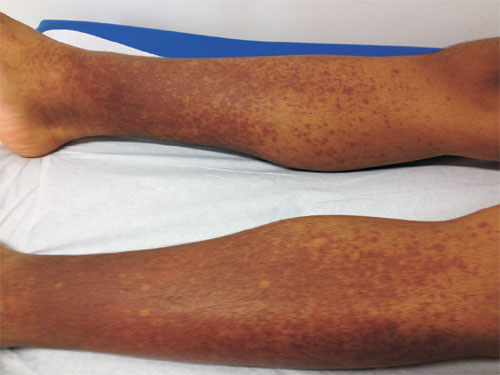An 11-year-old boy presented with a history of
painful red-purple papules on his legs that started at six years of age.
The lesions appeared after physical activity, and disappeared within a
few days of rest (Fig. 1). Biopsy demonstrated
leukocytoclastic vasculitis (papillary dermis, superficial vascular
plexus and superficial reticular dermis had blood vessels surrounded by
large number of neutrophils and extravasated erythrocytes. The vascular
wall was infiltrated with a deposit of eosinophilic material). Direct
immunofluorescence was not performed.
 |
|
Fig. 1 Purpuric plaques on the lower
extremities during an exercise-induced flare.
|
Exercise-induced vasculitis (EIV) may be considered
an acute microcirculatory deficiency and thermoregu-lation
decompensation with erythrocyte extravasation that occurs after episodes
of prolonged muscular activity. Henoch-Schönlein purpura (HSP) is
typically the first diagnosis that pediatricians make for patients whose
histopathology is leukocytoclastic vasculitis. The onset of symptoms
after physical activity and the histopathology findings make the
diagnosis of EIV as most likely. No treatment is required as EIV fades
spontaneously.

